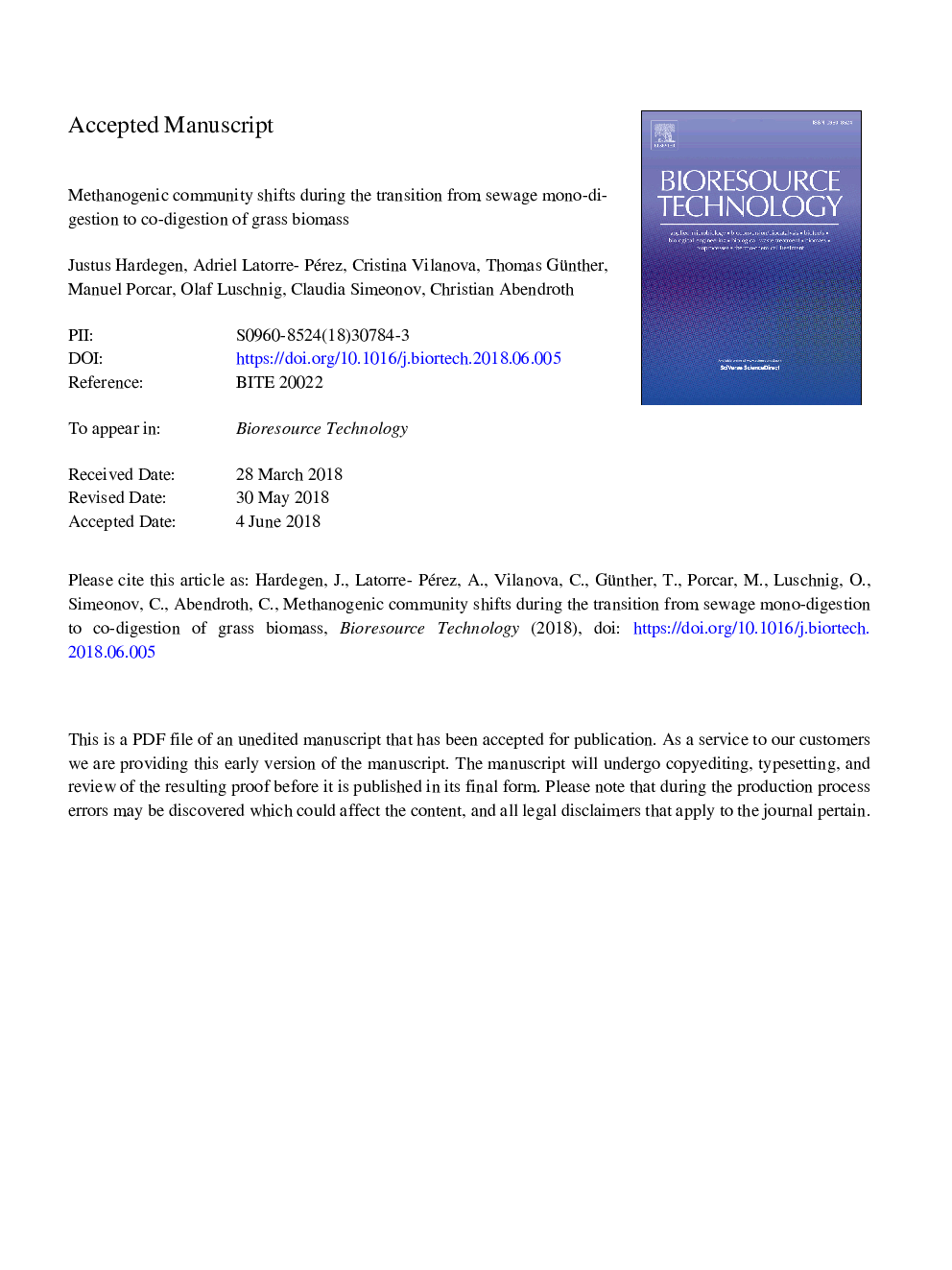| Article ID | Journal | Published Year | Pages | File Type |
|---|---|---|---|---|
| 7066279 | Bioresource Technology | 2018 | 26 Pages |
Abstract
In this work, liquid and solid fractions of grass biomass were used as co-substrates for anaerobic co-digestion of sewage sludge. The input of grass biomass was increased gradually, and the underlying methanogenic microbiome was assessed by means of microscopy-based cell counting and full-length 16S rRNA gene high-throughput sequencing, proving for the first time the suitability of nanopore-based portable sequencers as a monitoring tool for anaerobic digestion systems. In both cases co-fermentation resulted in an increased number of bacteria and methanogenic archaea. Interestingly, the microbial communities were highly different between solid and liquid-fed batches. Liquid-fed batches developed a more stable microbiome, enriched in Methanosarcina spp., and resulted in higher methanogenic yield. In contrast, solid-fed batches were highly unstable at higher substrate concentrations, and kept Methanosaeta spp. - typically associated to sewage sludge - as the majoritary methanogenic archaea.
Related Topics
Physical Sciences and Engineering
Chemical Engineering
Process Chemistry and Technology
Authors
Justus Hardegen, Adriel Latorre-Pérez, Cristina Vilanova, Thomas Günther, Manuel Porcar, Olaf Luschnig, Claudia Simeonov, Christian Abendroth,
